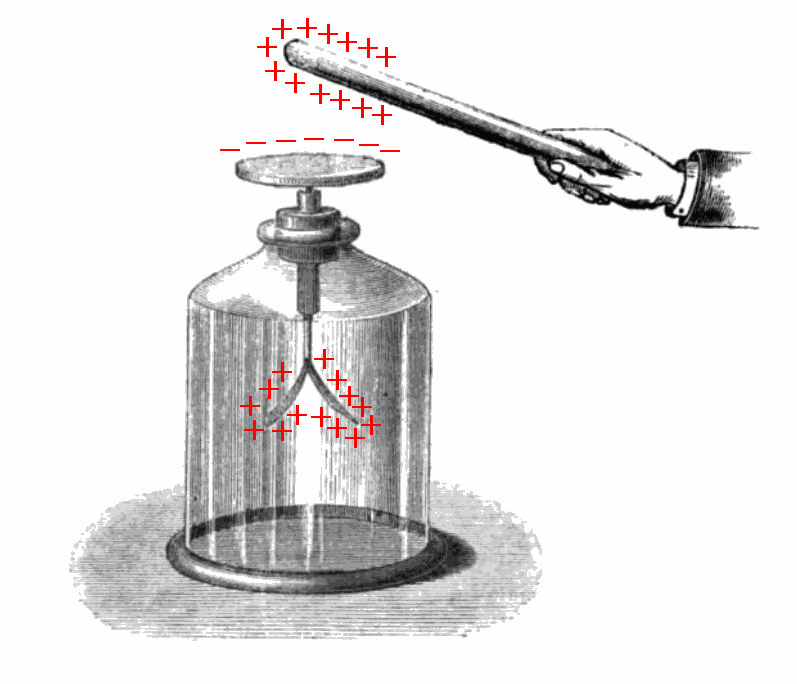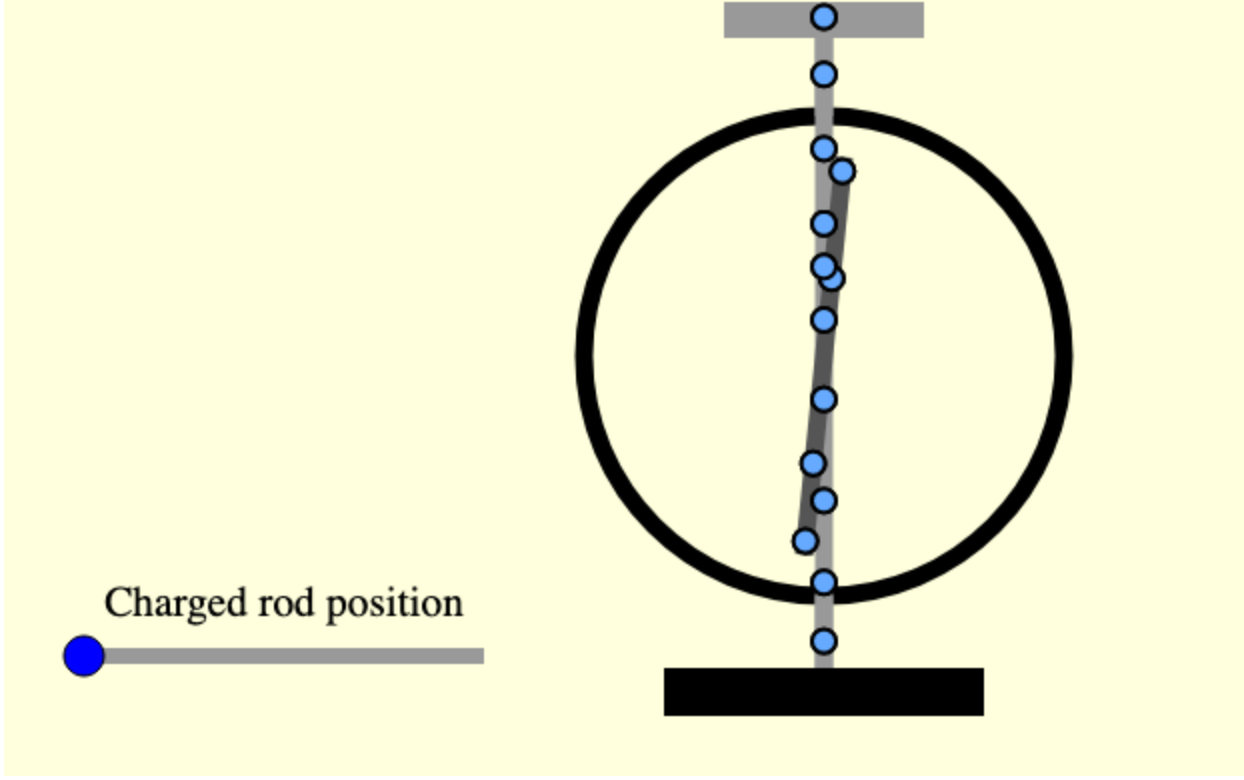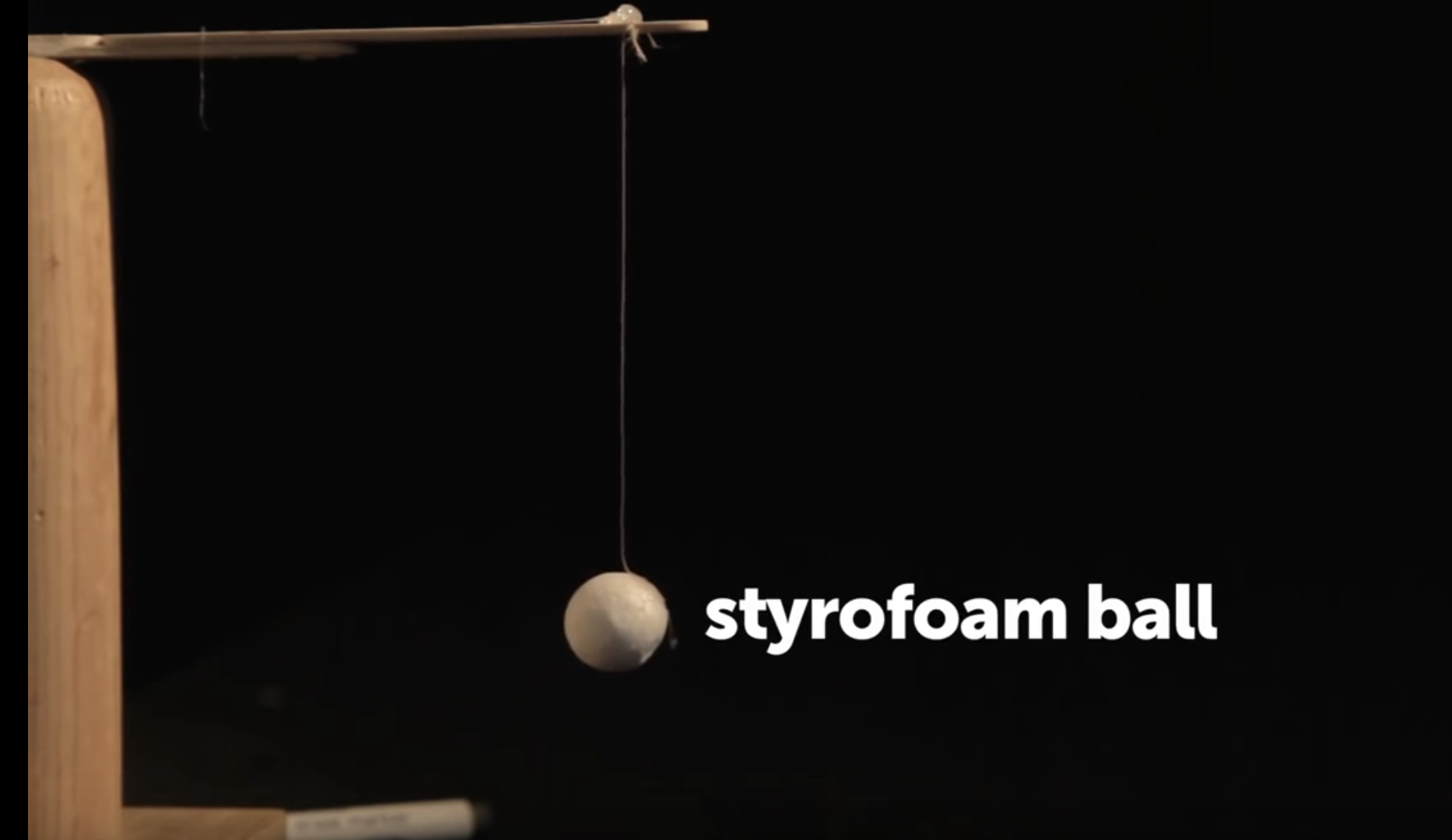
Here is the original lab manual. There are five experiments in this lab:
The experiments in this lab are qualitative. You’ll just be observing the transfer of charge between various objects, and your main task will be to descibe the mechanisms at work. In-person students should follow the instructions in the manual (it’s fairly well documented, I think). You only have to do three of the five experiments.
For online students, the procedure will be a little different from normal. Since there’s no “data” for this lab, we’re instead going to ask you to watch some videos and mess around with some simulations. You should still do a theory writeup, but for the experiment portion of your report you should follow the instructions on this page. That should be it.
The topics covered in this lab are electric charge, conduction, induction, and polarization. The theory section in the lab manual gives a brief overview of the basics, but I encourage you to do your own reading. We’ve posted some resources in the drive folder.
An electroscope is an instrument used to detect the presence of excess charge on an object. They’ve been slightly out of fashion since the late 1800s, but they’re still useful for demonstrating the principles of electric charge. Here’s an example of a “gold-leaf” electroscope:

The one used in the in-person lab has a different configuration, but follows the same idea. It has a needle that deflects when charge is induced.
Take a peek at these (somewhat low-fidelity) simulations of electroscopes:

|
Electroscope Simulation |

|
Electroscope Charged Rod |
Explain, as best you can, how the electroscope works. What occurs to the “leaves” as you continue to add charge? Why? Be detailed!
The pith ball electroscope is made of two nonconducting objects suspended from a string.
Watch this video here:

|
Pith Ball Electroscope |
There’s also a video in the drive folder of this experiment being performed in the lab.
Answer these questions:
Explain what occurs to the charges on the pith balls as the charged acrylic rod approaches them (before touching). What happens when the charged acrylic rod touches the pith balls? After touching, why does the pith balls get pushed away as the charged acrylic rod comes towards them?
Watch the video in the drive folder marked for section “5.3”. Answer these questions:
When we transfer charges from the charged plastic plate to the electroscope using an aluminum plate, how does the electrophorus method continue to build up charge in the electroscope without needing to rub the plastic base plate over and over again? Does the base plate ever run out of charge? (hint: charge by induction)
How are the charges distributed across the Leyden jar? Where are they being stored? What happens to the charges stored inside the Leyden jar when the Leyden jar touches the metal disk of the electroscope?
Watch the video in the drive folder marked for section “7”. Answer these questions:
When you place the charged acrylic rod close to the metal can, does the can move away or toward the rod? Why?
How are the charges distributed inside the metal can?
Why does the metal can follow the rod when the rod moves away?